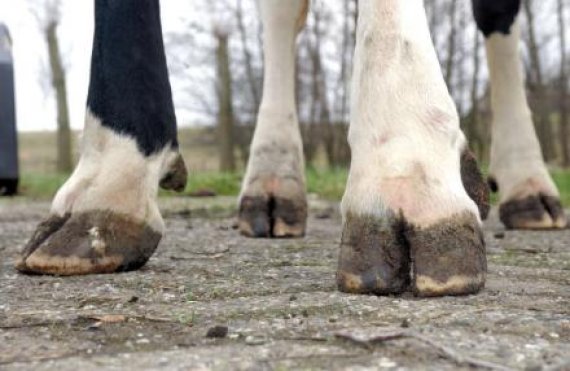Foot disorders include damaged hoofs, bleeding soles and bacterial infections such as stinky foot. In most cases, the cows do not walk with a visible limp, but they do in fact suffer from a fair bit of pain. They often show signs of this by wandering off on their own, or when their hoofs are inspected. These subclinical disorders often go unnoticed by farmers because the cow – being a prey animal – does not draw attention to its pain, says Bruijnis. For her research, she constructed a model showing the presence of foot disorders for a standard farm with 65 cows kept in lying stall-barns with a concrete floor, graze outdoors during summer and have their hoofs trimmed twice a year. To this model, Bruijnis added data from foot health experts who have rated the degree of pain related to various disorders. ‘The pain level is an indicator of the impact on welfare. By combining this level with the duration and frequency of the disorders, I set out to quantify the effect of foot disorders on animal welfare,’ says Bruijnis. The average welfare impact score of foot disorders seemed to be 12, on a scale of 0 to 60. This score corresponds to a situation in which considerable pain is felt over a period of three months. In the meantime, this model study has been published in Animal. The same magazine will also feature an article written by Bruijnis about the measures which can be taken to improve foot health. One of the major health risk factors is the hard concrete floor in lying stall-barns. A softer floor will exert less pressure on the feet and provide more bovine comfort, says Bruijnis. In addition, floor hygiene is important so that the cows do not slip and thus keep the infection level low. It is also important that dairy farmers inspect and take care of the hoofs regularly, trim them and watch out for any signs of pain. ‘The farmers’ attitude and aptitude are crucial in making this approach successful.’
Foot disorders in dairy cows a big welfare problem
The seriousness of foot disorders in dairy farming has been underestimated. Cows can suffer from pain even if they do not walk with a limp, says PhD candidate Mariëlle Bruijnis. She gives some tips on how to lessen this welfare problem.

